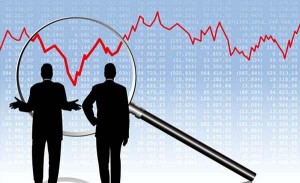Analytics, Economics, Estonia, EU – Baltic States, Financial Services, Investments, Latvia
International Internet Magazine. Baltic States news & analytics
Friday, 19.04.2024, 21:41
Commission lowers Estonia's economic growth forecast, ups Latvian for 2016
 Print version
Print version |
|---|
In the fall, the EU executive predicted 2.6% growth both this year and the next for Estonia.
Estonia's real gross domestic product is expected to have expanded by just 0.9% in 2015, much slower than expected in the fall forecast, the European Commission said. "This relatively weak outcome reflects negative base effects in the electronics sector, a sharply reduced demand from neighbouring Russia and falling international oil prices which have made Estonia's shale oil sector less competitive," the winter forecast reads.
Real GDP growth is seen to rise to 2.1% this year and accelerate to 2.3% in 2017 as the global outlook gradually improves. Private consumption growth is set to decelerate over the forecast horizon as real income growth slows down. However, investment is expected to become a stronger growth driver.
Financing conditions remain broadly favorable and bank lending to enterprises resumed in the second half of 2015. "Investment, especially in equipment, is forecast to rebound in 2016 and 2017 supported by growing demand from the euro area and the substitution of increasingly expensive workers with equipment. In addition, public investment is set to gradually start growing again over the course of 2016 and 2017, after disbursements of EU funding under the new programming period resume," the Commission says.
A reorientation of goods exports towards EU trading partners is expected to ensure Estonia a positive external balance of goods and services throughout the forecast period, despite the growth of imports expected as domestic investment recovers. According to the Commission, downside risks to the forecast could stem from a delayed recovery in neighboring Finland and Russia and, in turn, lower external demand. In parallel, persistently low global oil prices could further impair Estonia's shale oil industry and exports.
Inflation is expected to rise to 1% this year and accelerate to 2.5% in 2017, driven by several factors including excise tax increases, strong wage growth and slow recovery of commodity prices. The fall forecast of the European Commission expected prices to rise 1.8% in 2016 and 2.9% in 2017.
Economic growth in Latvia is estimated to have picked up to 2.7% in 2015 supported by better-than-expected investment and construction volumes. Growth is forecast to improve further to 3.1% in 2016 and 3.2% in 2017, driven mainly by private consumption and investment, according to the European Commission's Winter 2016 Economic Forecast.
The European Union's growth is forecast at 1.9% this year and the euro area's growth is projected at 1.7%.
The risks to Latvia's forecast are broadly balanced, as the unstable external environment and domestic political tensions are largely offset by the strong upturn in the tourism sector, significant cost savings from low energy prices, and the successful reorientation of domestic businesses towards new products and markets, explains the European Commission.
Following a decline in outstanding loans over the past few years, lending activity began to increase over the course of 2015 along with the fall in interest rates. New loans to residents increased by around 10% year on year in the third quarter of 2015, notes the Commission. Furthermore, for the first time since the 2008-2010 crisis, the unemployment rate dropped below 10% in 2015 and is expected to decline further to 8.6% in 2017.
The Commission also indicates that Latvia should use the favorable situation in the country's economy to pursue structural reforms, which are of great importance for drawing investments and making the economy more competitive.
While growth is continuing at a moderate rate in Europe, significant parts of the world economy are grappling with major challenges, the Commission says in the report. Growth in the euro area in 2016 is expected to continue, but the recovery is slow, both in historical perspective and compared to other advanced economies. While the renewed drop in energy prices should continue to boost households' real incomes and consumption, public consumption has surprised on the upside due to the arrival of unprecedented numbers of migrants fleeing war and insecurity in Syria and elsewhere. Fiscal policy more generally is expected to support the recovery this year, and monetary conditions are set to remain highly accommodative.
However, despite the continued confluence of supporting factors, the acceleration of economic activity expected this year is minor: GDP in the euro area is forecast to expand by 1.7% compared to 1.6% last year. Growth should pick up further to 1.9% in 2017 but this will depend crucially on a rebound in investment, which has so far remained elusive and is sensitive to the materialization of the risks surrounding the central scenario.








 «The Baltic Course» Is Sold and Stays in Business!
«The Baltic Course» Is Sold and Stays in Business!

